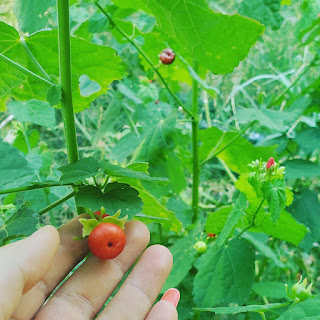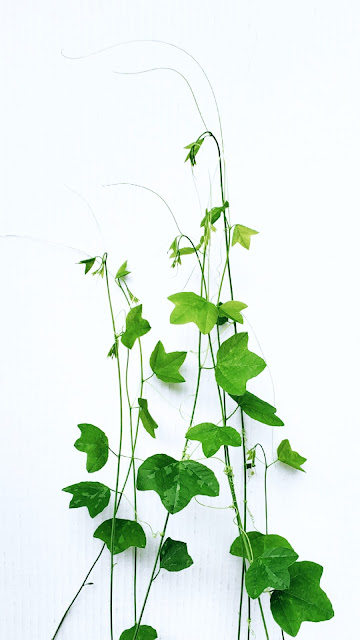The Turk's Cap is fruiting!
It's flowers make an easy pick-and-munch, or go beautifully in salads. I've tried candying the flowers but they turned into something tasting like a super sweet okra (I don't recommend it). Pickling might be an option but I never quite seem to catch the flowers before their pistol is out -- and most of my pickled flower recipes call for that bud stage where the flower hasn't quite opened yet. So, pickled Turk's Cap Flower Buds is still on my list to test.
https://www.foragingtexas.com/2008/08/turks-cap.html suggests a lemonade-type drink can be made from the flowers as well. I'll definitely be trying that!
It's leaves can be eaten much like grape leaves -- making dolmas is another recipe on my list to try with Turk's Cap leaves. To do this, pick younger leaves rather than older ones, as the advice is similar to every other plant it seems -- the older the leaves get (and the bigger) the more bitter they become and potentially tougher texturally. You want to pick like Goldilocks -- the medium ones that are juuuuuust right for optimum enjoyment. But on Turk's Cap that shouldn't be too hard since there are a LOT of leaves to choose from going up and down the stalks that grow like crazy across a Texas summer.
 |
| Turks cap stalk of leaves with flowers and fruit interspersed |
And finally, the FRUIT is edible. Albeit small. The Turk's Cap fruit goes by the common name 'Mexican apple'. I assume from that there are no apple trees native to the Mexican climate so this bushy, hardy grower with its tiny red fruits got the substitution designation. Or perhaps, the fruit got its name due to the way in which, when broken open by hand, it snaps into what appear to be perfect little apple wedges (for a doll house). At any rate, if you can find some, try them out! The harvest is never very large -- and it can be a real challenge to spy these critters, as prior to being ripe they blend into the floral and leafing areas all up and down the stem; then, once ripe, they're the same color and similar shape as the blooming flowers that are still active and present on the plant!
 |
| Turk's Cap fruit before ripening to red on the vine |
The first summer out picking Turk's Cap I thought it was possibly the most devious fruiting plant possible. In order to try some recipes with the fruit I would pick a handful at a time (7-8 little apples), and collect them into a freezer bag where more could be added throughout the season.
Was it worth it?
Well, it did make for some nice (small batch) apple-ish jelly, but this year I've decided to just enjoy the fruit fresh.
Dehydrating the fruit crossed my mind, but it's a bit seedy so that may just take the flavor out all together and just leave a crunchy pebble. Also, I don't yet have a good dehydrator -- so I'll leave that experiment to you all for now. But drying may be a great way to incorporate these fruits into teas, which could be an awesome and beautiful experiment.
Whatever you do or eat with Turk's Cap, this plant has a multitude of options! It's a fast grower and is very tolerant of Texas weather (mine even survived the 'Winter Week' in early 2021 after only being in the ground for 6 months or so).
I'm interested in finding out what natural dye may come from Turk's Cap, and I've also read that, if you are cutting down branches of the plant, that the inner and outer bark makes excellent cordage. Since these plants die back in the winter, cordage plans go on my list for pruning times in the early summer and the late fall harvest list.
I haven't seen or read about any way of harvesting or eating the roots, so unless you find a good resource on the safety of that, as with any other plant, only eat what you can positively identify as safe -- for this one it's leaves (preferably younger), flowers, and fruits! And craft with what is useful after that, or leave this awesome plant for the hummingbirds, other pollinators, and spectators to enjoy.
If you are interested in getting some of your own, I purchased my Turk's Cap plants from the Texas Discovery Garden's Annual Plant sale and I would highly recommend that to others in North Texas.




Comments
Post a Comment